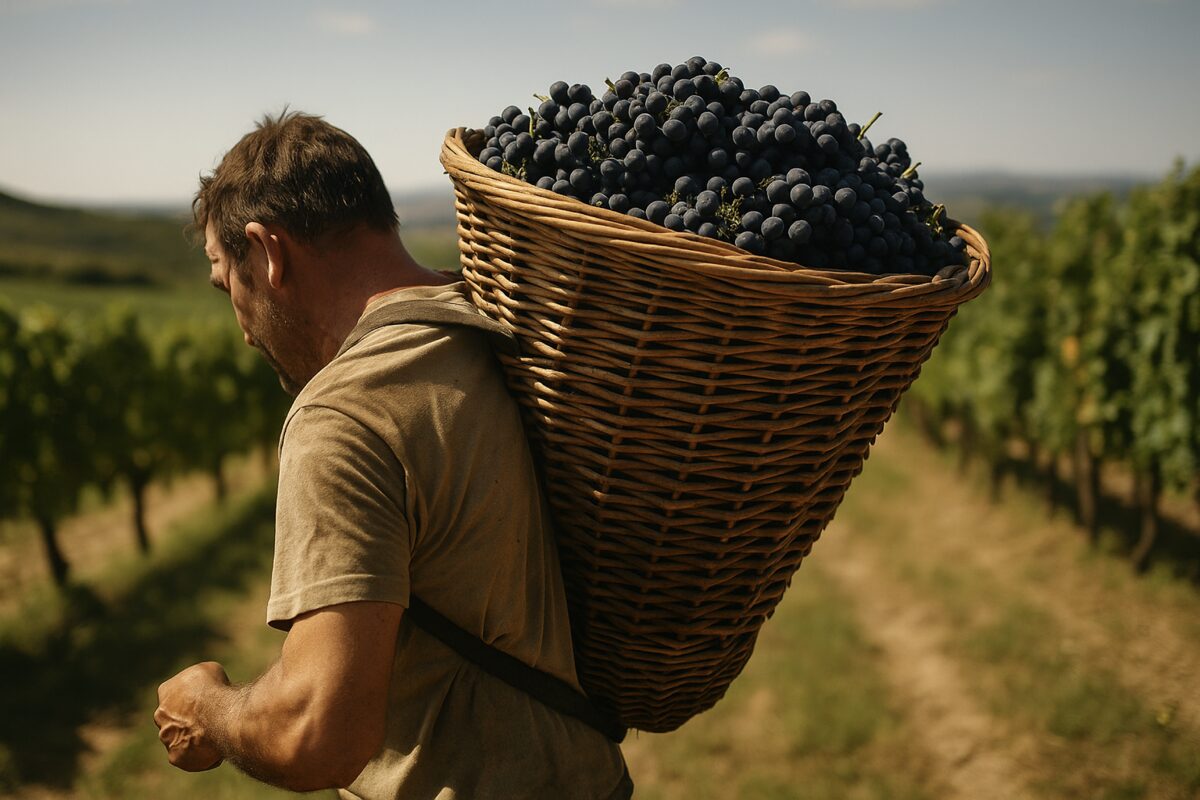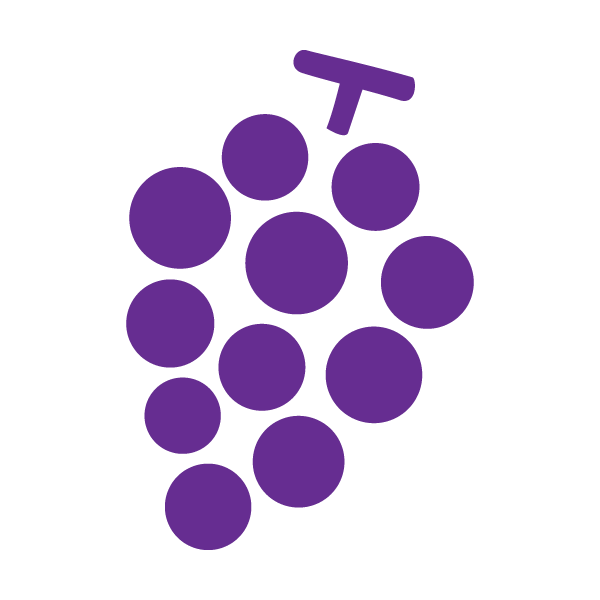Harvest Comes Early
Harvest is arriving earlier. In Beaune, where a harvest log runs back to 1659, the dates barely shifted for centuries. Then came 1988. Since that year, as global warming gathered speed, the start of picking has moved forward by roughly sixteen days on average. Warmth hurries everything. Budbreak, flowering, ripening. Sugar climbs, alcohol follows, acidity slips. Winemakers try to pull the timing back by picking sooner, yet there is only so much room to move. In 2019 a southern heatwave scorched leaves and fruit, and in parts of Gard and Hérault half the crop was lost.
Summer 2025: A Divided Nation
The summer of 2025 drew a line through the map. From June to mid-August, France recorded its third-hottest summer. The north felt almost lucky. In the Loire, Burgundy, and Champagne, grapes reached full ripeness without the old crutch of chaptalisation. The wines tasted rounder and more self-sufficient. The south told a harder story. Average alcohol has risen from about 11.8 percent in the 1980s to roughly 14 percent today. Acidity ebbs and flavors turn heavy. The market leans toward freshness, so southern producers find themselves out of step.
Sweetness as Power—and as Peril
Sugar gives wine its body and its force, yet it can tip a cellar into imbalance. A long study in Languedoc found potential alcohol up by more than two points and total acidity down by a gram per liter. The task now is to hold on to a crisp outline while slowing the rush of sugar. Taste is shifting with the weather as well. Hotter summers bring lighter meals and cooler dishes, and with them a taste for lighter wines. Global consumption reached a sixty-year low in 2024, which leaves the trade to square a circle. Make wines that are fresher and more affordable, and make them stand up to heat.
Not Just Climate, but Markets
Climate is not the only pressure. French domestic drinking is sliding. In the United States, a fifteen percent tariff on European wine adds weight to the load. Subsidies pay growers to pull vines, but many say money on its own will not secure a future. The human cost is rising. Vineyard work is now among the jobs most exposed to heat stress, second only to construction. One survey found that nearly half of French wine workers expect to leave within five years. Long harvests under forty-degree heat test both body and mind. In Alsace, the village of Eguisheim logged its earliest harvest in two centuries in 2025. Acidity promised wines that could age, yet growers spoke of unease. Four or five weeks of labor in punishing heat is its own kind of crisis. One farmer said that his may be the last generation to live securely as Alsatian winegrowers.
Shifting Grapes, Shifting Strategies
Adaptation has begun to redraw the vineyard. Bordeaux is edging away from Merlot toward Cabernet Sauvignon and has formally approved six supplementary varieties that handle heat. Burgundy cannot abandon Pinot Noir, so growers work the margins, adjusting harvest dates and canopy to shield fruit. In Languedoc, growers are testing Assyrtiko for its ability to keep its edge in hot weather, though appellation rules limit its use. Even the layout of a field is under review. North–south rows cut down the worst of the afternoon burn. Shade cloth, cover crops, and mulch are now as essential as barrels and presses. Vineyard work is starting to resemble landscape architecture as much as farming.
Vineyards from Orbit
Satellites have joined the craft. Under the banner of precision viticulture, images from the European Sentinel-2 satellites map vine vigor and water stress. The pictures guide choices. Irrigate this slope, harvest that block first. In Occitanie, trials pair ground sensors with satellite views and feed the data into software that draws a live portrait of drought stress from parcel to parcel. Tradition still sets the tone, but intuition is now checked against a view from orbit.
Looking Ahead
The future will not be decided by latitude alone. Climate is nudging vineyards north, yet the winners will be those who make shrewd decisions row by row. Turn the vines to soften the afternoon sun. Lay straw or plant cover to hold moisture. Pick at night to spare workers. Introduce tougher varieties and rootstocks. Offer new cuvées that are lighter, fresher, and lower in alcohol. Two centuries of handwritten harvest notes now sit beside satellite maps that refresh by the week. Together they tell a plain story. The taste of French wine is becoming a record not only of soil and slope, but of the climate that is changing above them.
-
Orienting vines to soften sun exposure
-
Covering soil with straw or plants to retain moisture
-
Harvesting by night to spare workers from heat
-
Introducing drought-tolerant varieties and rootstocks
-
Offering new cuvées that are lighter, fresher, lower in alcohol
Two centuries of handwritten harvest diaries now sit beside real-time satellite maps. Together, they chart a single truth: the taste of French wine is becoming a record not just of terroir, but of climate change itself.
I picked grapes once, back when I was a student. In France, there aren’t many jobs for students. The kind of part-time work you’d find everywhere in Japan—cafés, retail—belongs to professionals here. A café waiter isn’t a nineteen-year-old in a bow tie; he’s a fifty-year-old monsieur who’s been doing it his whole life, fast on his feet, proud of the craft. Students don’t step into that role.
So harvest work—vendange—was the dream job. Two weeks in the vines, food and a bed (well, a mattress on the floor) covered, and enough money left over to keep traveling. For foreign students, it sounded ideal. French kids knew better. They’d seen the work up close and wanted no part of it.
I learned why on the first day. By sundown I was finished, body wrecked. They told us we could drink as much wine as we wanted, but I was too tired to lift a glass. Each night I fell asleep like I’d been dropped from a height. The people were kind, the memory a good one, but once was enough.
Back then harvest meant autumn. Mornings were cold, evenings colder. Daytime might creep toward twenty-five degrees, never higher. Still, the sun burned. You wore armor: hat, long sleeves, boots. Grapevine canes are sharp, snakes and insects lurk in the grass. And always that wicker basket—the hotte—strapped to your back, filling with grapes until you staggered under the weight. Even in cool air, you ended drenched in sweat.
Now the work has shifted into high summer. Temperatures at forty degrees. Try to picture it: heavy clothes, a loaded basket, the heat pressing down. Two hours and you’d collapse. It isn’t romantic; it’s dangerous. People talk about breeding grapes that can handle the heat. Fine. But the real question is whether people can handle it. And the answer, I think, is no. Not without help.
Machines already exist that can do this work. Harvesting robots with hands soft enough to pluck a bunch without crushing it, sensors sharp enough to read ripeness better than the human eye. Some protest: high wine must be picked by human hands. As if the juice knows. As if romance trumps survival. It doesn’t. Not here. This is about protecting lives.
Of course, small farmers can’t afford the machines. That’s the hard part. But if subsidies are going to be spent, this is where they belong—keeping workers safe, keeping vineyards alive. Health insurance covers accidents; why not fund the tools that prevent them?
Because the heat isn’t going away. It will only grow harsher. Wait too long, and we’ll see more injuries, more growers walking away, whole villages losing their vineyards. Then the romance really dies.
Better to let a robot carry the load than to watch the people disappear.



